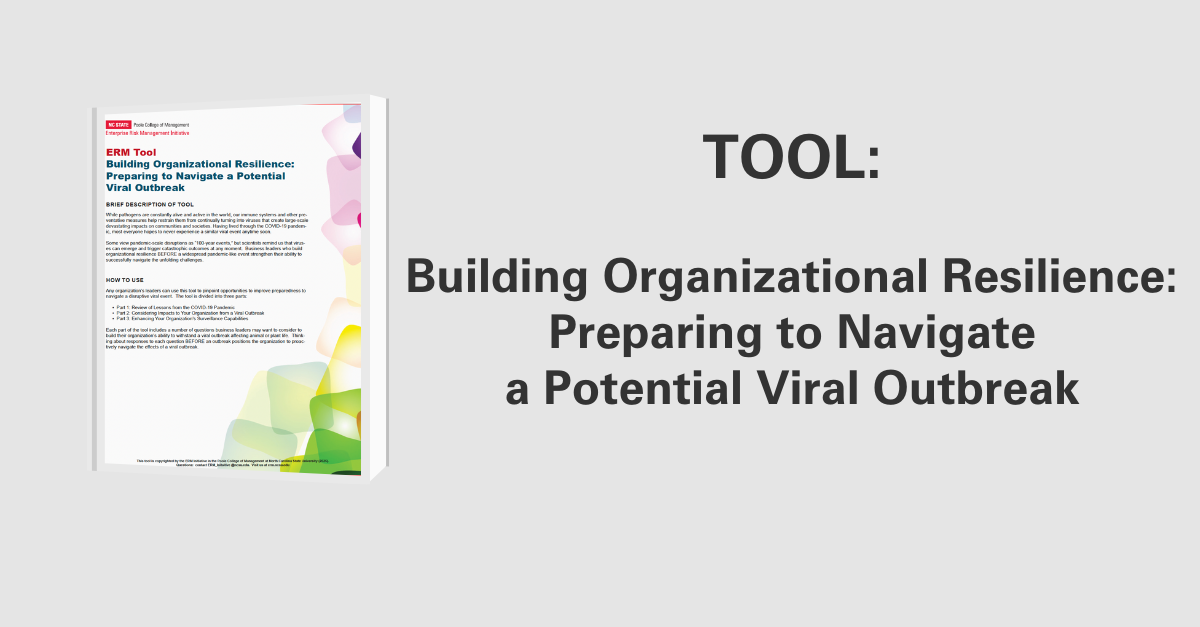Succession Planning Strategies: Capturing Knowledge & Expertise of Seasoned Talent
An exodus of expertise is likely to reoccur over the next several years as baby boomers continue to move towards retirement. Organizations that fail to plan for the transfer of talented skill and wisdom accumulated over time will lose valuable insights that will be difficult to rebuild and replace.

In this thought paper, “Succession Planning Strategies: Capturing Knowledge & Expertise of Seasoned Talent,” Beth Ritter, Professor of Practice in NC State’s Poole College of Management emphasizes why being strategic about planning for the succession of soon-to-be exiting talent. She highlights strategies for how an organization can train and equip those taking the reins in the absence of seasoned experts can help minimize knowledge loss triggered by employees who are no longer a part of the organization.
Knowledge Loss May be an Unrecognized, but Significant Risk
In her research, Ritter finds that both retirees and ERM leaders agree that current methods their organizations use to transfer knowledge between retirees and remaining employees have opportunities for improvement. Seventy nine percent (79%) of risk managers she surveyed indicate processes to transfer knowledge between retirees and others in the organization are either minimally effective or somewhat effective. Only one in three recent retirees share that they were asked to help formally transfer knowledge to their successors, with a majority of retirees leaving the organization with no formal opportunity to pass on important insights.
Assessing Knowledge Loss for Your Organization
Considering risk of significant loss of knowledge due to an aging workforce who may leave the organization in the next 3-5 years, 13% of risk managers indicated the risk significance as extensive, 71% indicated the significance mostly or somewhat extensive and only 17% indicated the risk significance as minimally extensive.
Pinpointing Succession Planning Strategies for Knowledge Transfer
In her research, she identified 11 approaches to knowledge transfer, including doing nothing, and asked retirees and risk professionals to rank which practices were most often utilized. She outlines those briefly in the thought paper. But, she provides these suggested strategies:
- After Action Reviews – The reviews have a tradition in the Army and are a “look back” review of activities. Questions are asked and answered after a key activity occurs. Post event reviews and documentation preserve the process or knowledge for others to learn and allow organizations to assess achievement and to consider ways to improve for the future. One can imagine that the sessions would be helpful to those trying to learn about a critical area of expertise and that the documentation could be helpful in future settings.
- Communities of Practice – These groups of employees regularly share best practices to build organization competency. They support internal professional development and allow work to occur across organizations. These are often cross unit groups that gather different hierarchical levels of employees to focus on a specific discipline or knowledge expertise. Their entire focus is on knowledge transfer and competency building so it is understandable that they support knowledge transfer practices.
- Collaborative Software – Use of technology can enable group interactions and knowledge sharing. Data available in real time for and from multiple sources allows connection and communication to occur virtually. Different generations of employees can collaborate in tools such as wikis, blogs, instant messaging apps, and project management software across geographies and time zones. These tools allow employees to record, share, exchange, and enhance information about key aspects of the critical knowledge area and could enhance successful knowledge transfer.
When one considers how an organization might implement after action reviews, communities of practice and/or collaborative software, one quickly realizes this is about culture and structure.
Risk professionals can:
- Encourage organizations to learn and adopt these new ways of working to support a culture of knowledge transfer and
- Identify critical knowledge areas and then encourage more structured group interaction between employees and those who own critical knowledge and those who may pursue retirement to help reduce the risk of knowledge loss associated with aging employees.
To do so will support the management of risk associated with the aging of the workforce. The absence of any kind of focused effort to transfer knowledge from more experienced to less experienced personnel can result in employees left to lead the organization who do not possess the necessary training, experience, skills, or capacities to effectively complete the tasks assigned to them.


